-
-
The Effect of Tactile Stimulation of the Face on the Recognition of Emotional Facial Expressions in Autism Spectrum Disorder (TÜBİTAK–2209-A Supported Project)
The project aims to investigate how tactile stimulation of the face affects the recognition of emotional facial expressions and the functioning of the mirror neuron system in children with Autism Spectrum Disorder (ASD) and typically developing children.
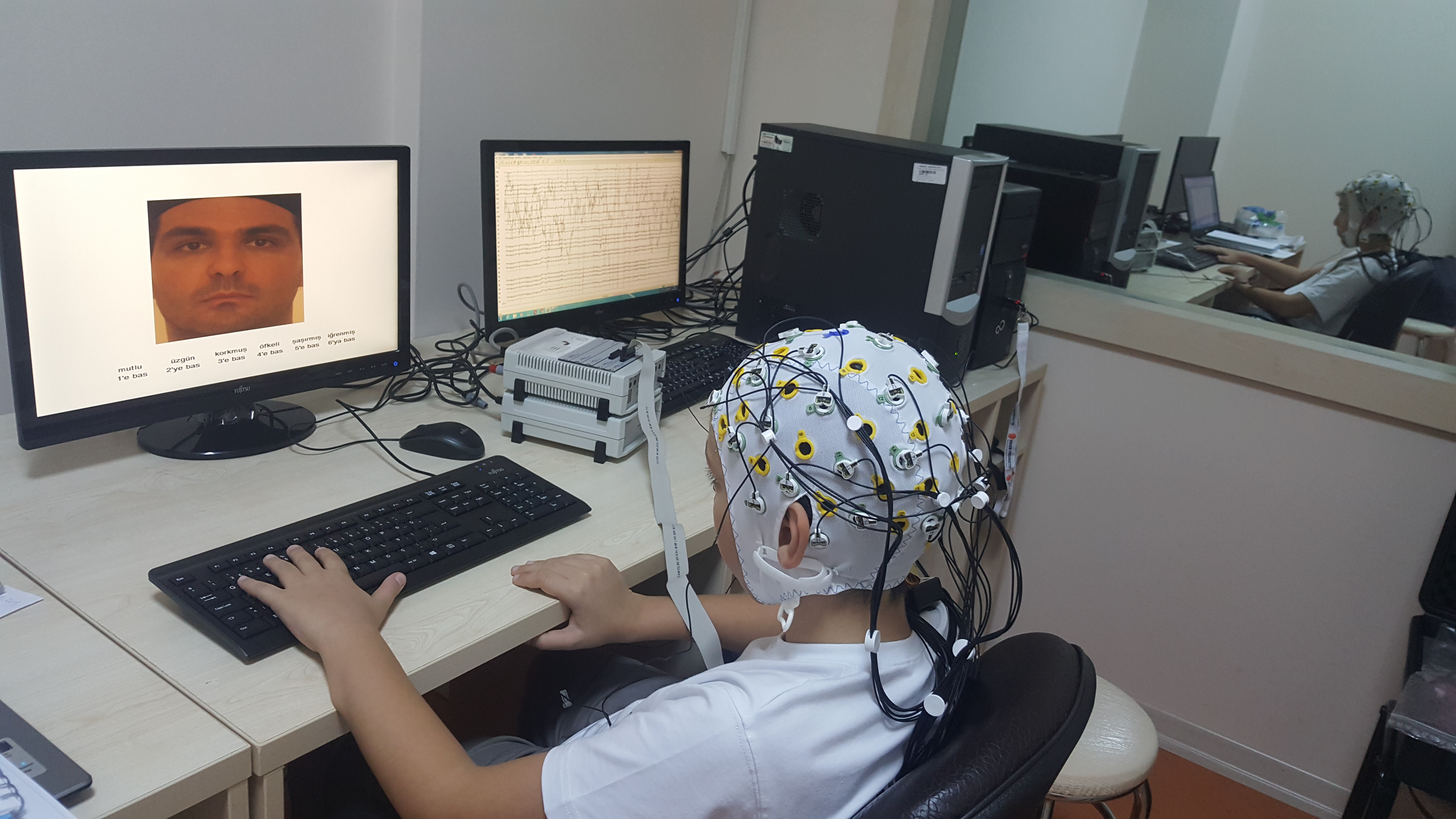
-
-
Developing the Somatosensory Stimulation Hypothesis to Explain the Interaction Between Face and Hand
The project aims to systematically investigate the behavior of touching one's own face, which is commonly observed in humans, to understand the function and mechanism of this behavior.
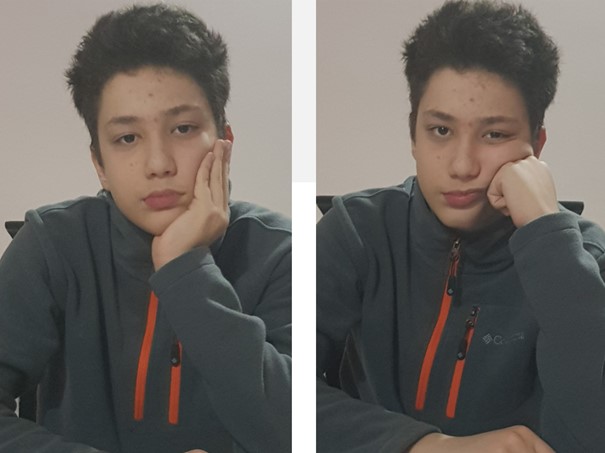
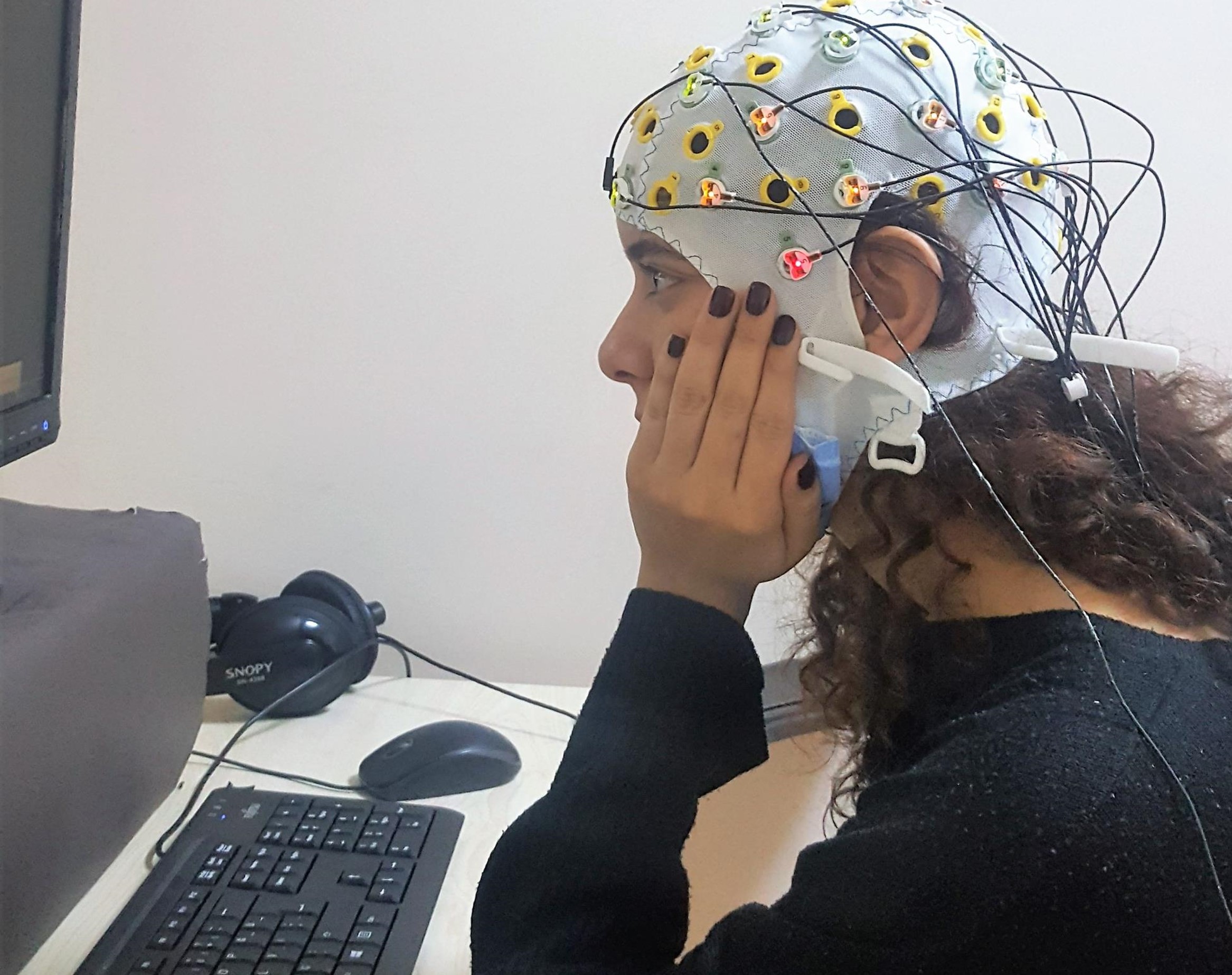
-
Investigating Emotion Recognition and Emotional Expression Abilities in ALS Patients
-
The study aims to understand whether the difficulty ALS patients have in recognizing emotional expressions is due to a cognitive problem or the difficulty related to motor movements in their own faces.
Behavioral and Physiological Examination of Phenotype Matching and Average-Based Encoding in the Context of Kin Recognition Mechanisms The project aims to behaviorally and physiologically examine the nature of the kin template used in phenotype matching, one of the kin recognition mechanisms, in the context of face perception.
The Role of Ontogeny in the Organization of the Somatosensory Map in the Brain
-
The study compares the sensory and neural responses to somatosensory stimulation of individuals with phocomelia and tetramelia against controls to understand the role of ontogeny in the organization of the somatosensory cortex.
-
-
Investigating the Threat Perception Elicited by Mechanical and Human-like Robot Faces in the Context of Approach Effect, Compared to Human Faces and Pareidolia Stimuli (TÜBİTAK–2209-A Supported Project)
With the advancement of technology, robots have begun to appear at every level of human social life. The study aims to investigate the threat perception created by mechanical and human-like robot faces in the context of the approach effect, in comparison with human faces and pareidolia stimuli. Therefore, behavioral and electrophysiological data related to the threatening nature of robot face designs are of great importance for making accurate robot face designs. The research includes the comparison of the threat perception related to mechanical and human-like robot faces with pareidolia and human face stimuli.
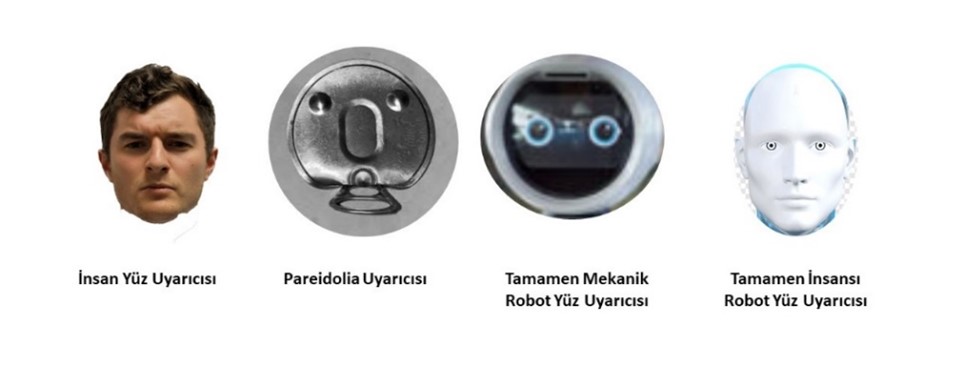
-
Investigating Pareidolia Images in the Context of Baby Schema and Spatial Frequency Using EMG and Behavioral Data
In this study, pareidolia images, which show activation in the FFA (Fusiform Face Area) even without being actual face images, are manipulated with the baby schema to examine whether the pareidolia images are perceived as cute. EMG data (Zygomaticus Major Muscle) and behavioral data were collected from participants.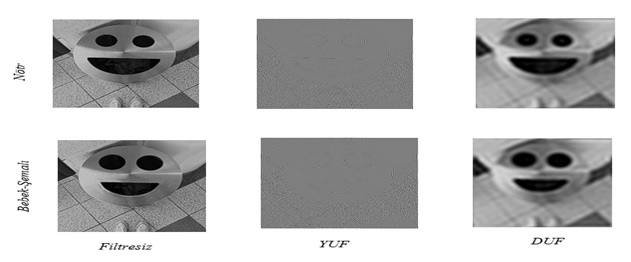
- Investigating the Effect of the AU101 Muscle in Dog Faces on Humans' Evaluation of Dog Faces, Both Behaviorally and Physiologically


- Investigating the Effects of the Mirror Neuron System on Face Perception and Recognition of Facial Expressions
- The project aims to investigate the role of the mirror neuron system in face perception and in the recognition of emotional facial expressions using the EEG method. Additionally, the effects of tactile stimulation on face perception and the mirror neuron system have been explored.


Investigating Mu Suppression in the Recognition of Emotional Morphed Faces
The role of the mirror neuron system in recognizing the facial expressions of oneself, others, and morphed faces has been studied using the EEG method. This study aims to understand whether the recognition of facial expressions interacts with the effect of familiarity with the face.
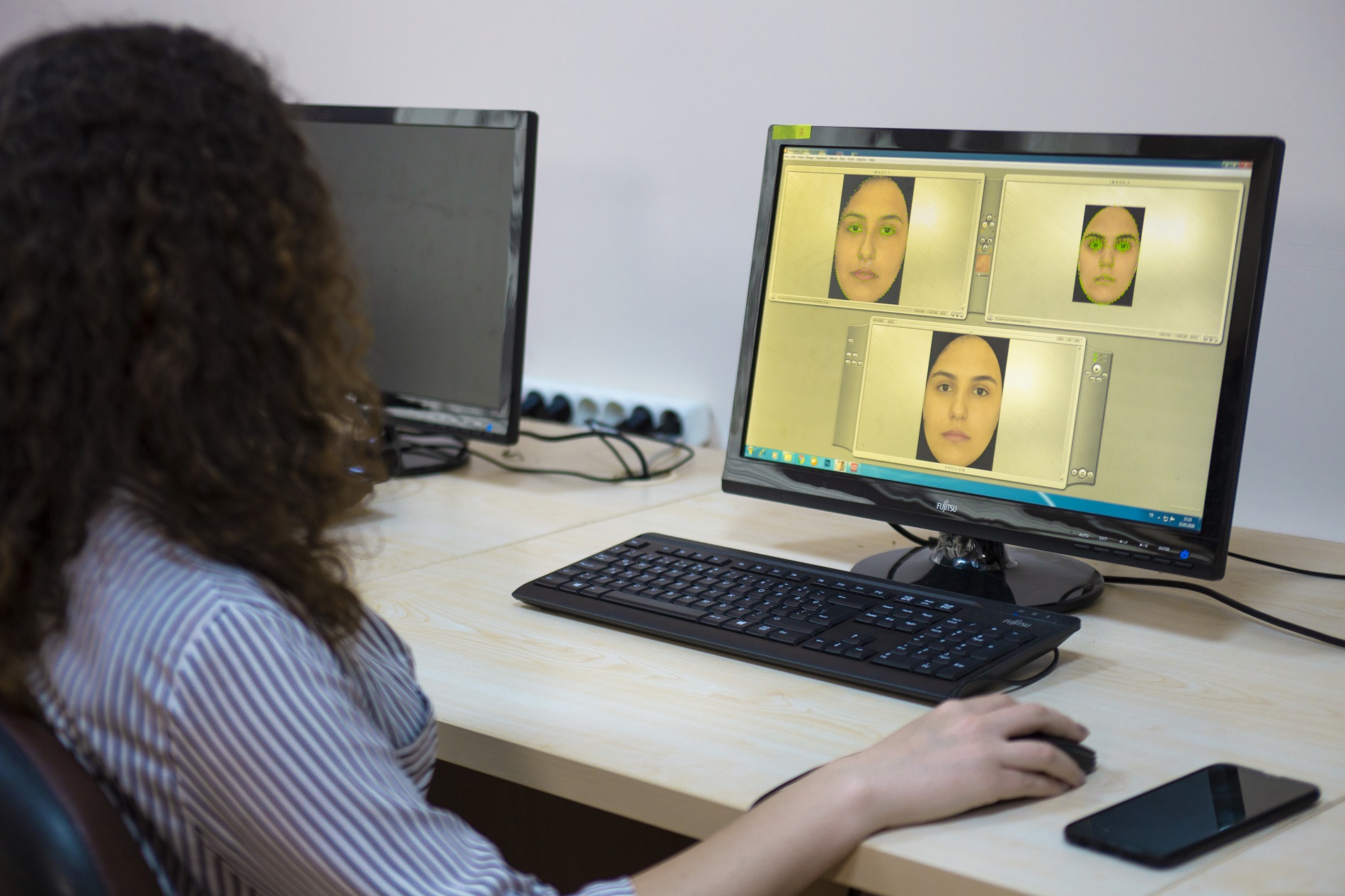
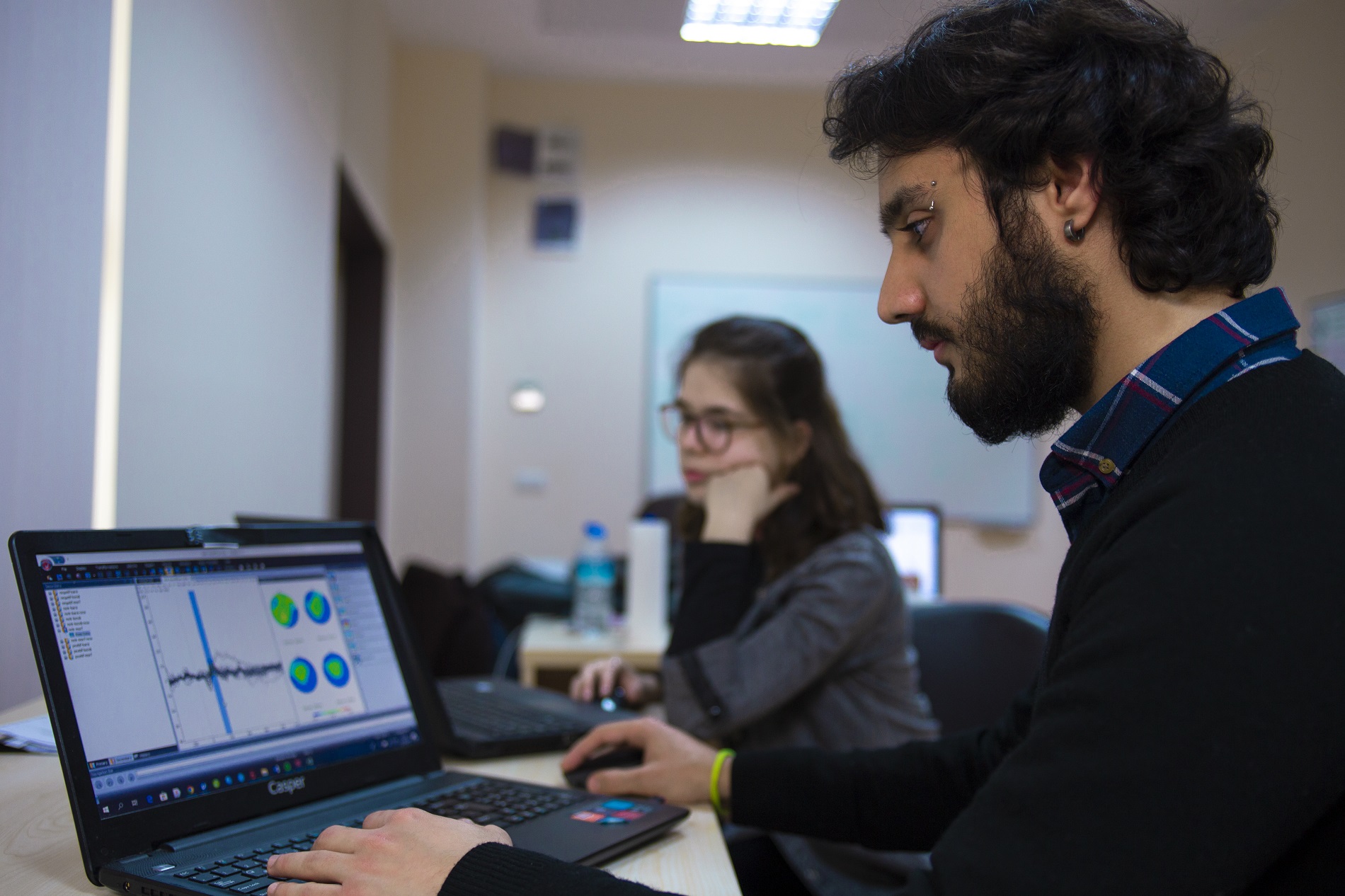
- Face Perception in Face Transplant Patients
- Face transplantation, one of the most remarkable operations of this century, not only improves the quality of life for patients but also raises numerous scientific questions. The aim of the project is to answer both theoretical and practical questions related to face perception in face transplant patients and to understand the psychological and neural mechanisms underlying face perception. The perception of faces and the patients' perceptions of their own faces are examined and compared with a control group.
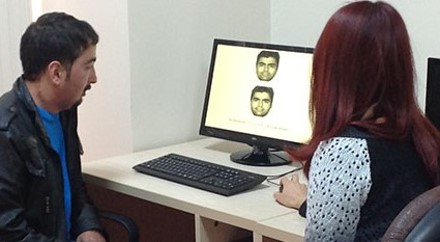
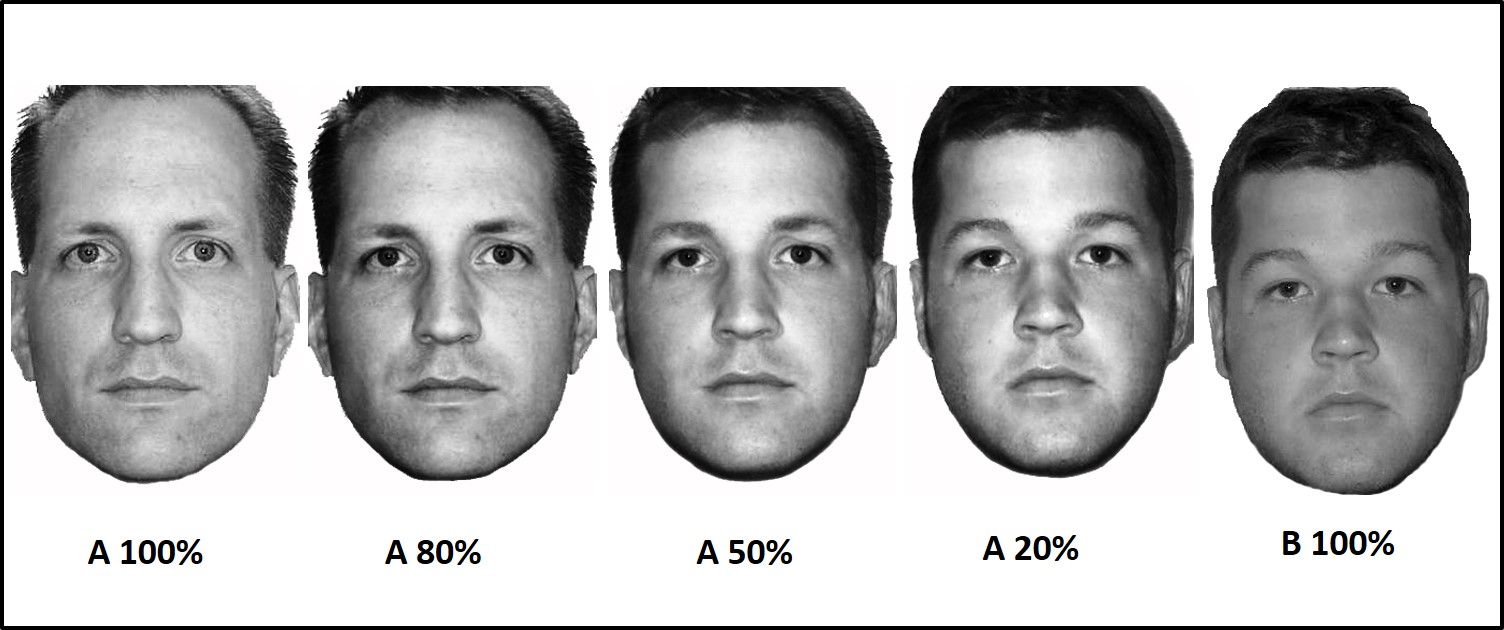
- Enfacemet Illusion, Empathic Abilities, and Lateralization
- Enfacemet illusion is a visuo-tactile illusion that occurs when a person sees another face being touched simultaneously with their own face being touched, resulting in a change in recognizing their own face. Studies on the face change illusion often prefer stimulation of the left side of the face. Whether stimulation of the left or right side of the face has any effect on the vividness of the illusion and whether there is any relationship between empathic skills, personality traits, and the vividness of the illusion has been investigated.
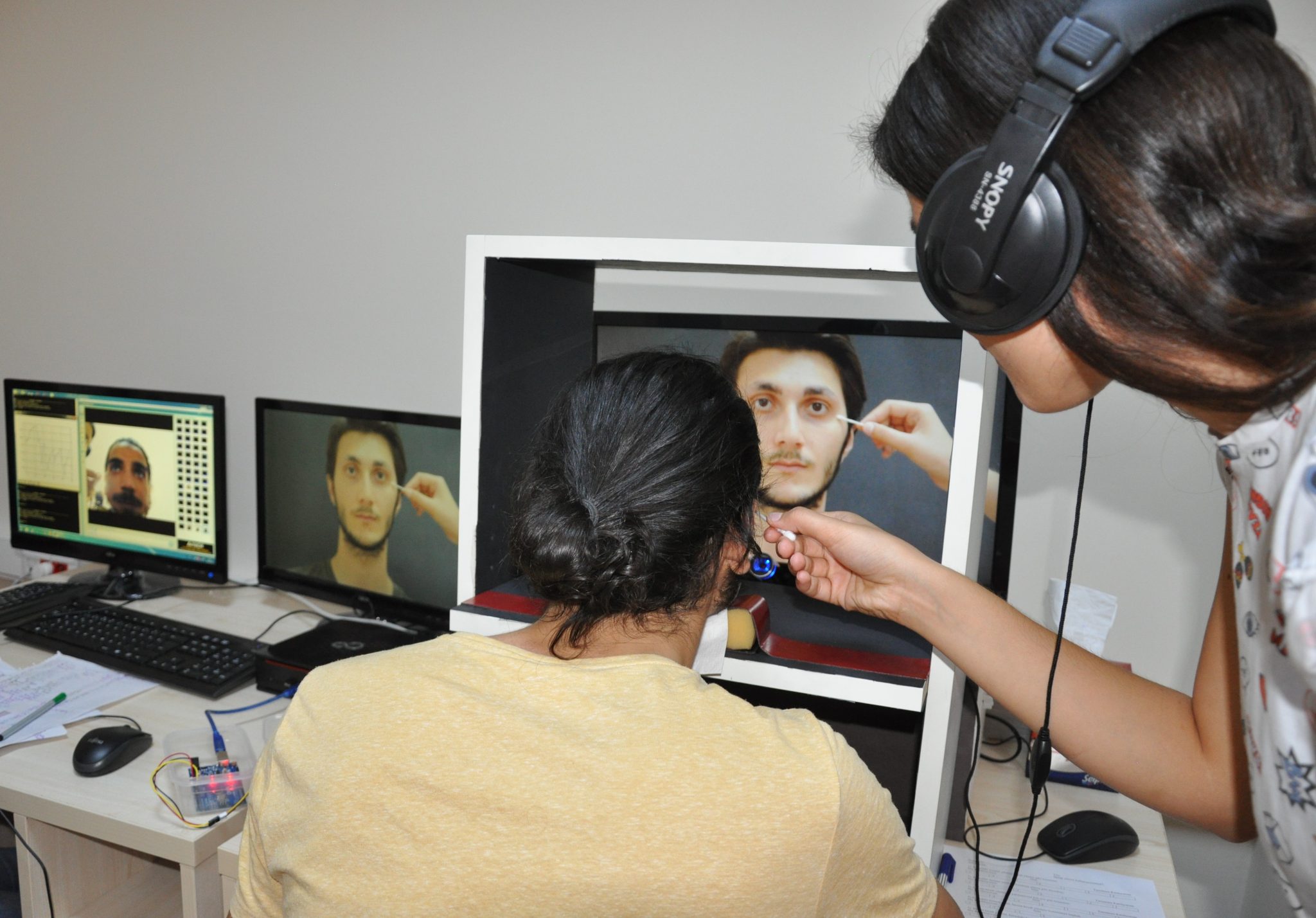
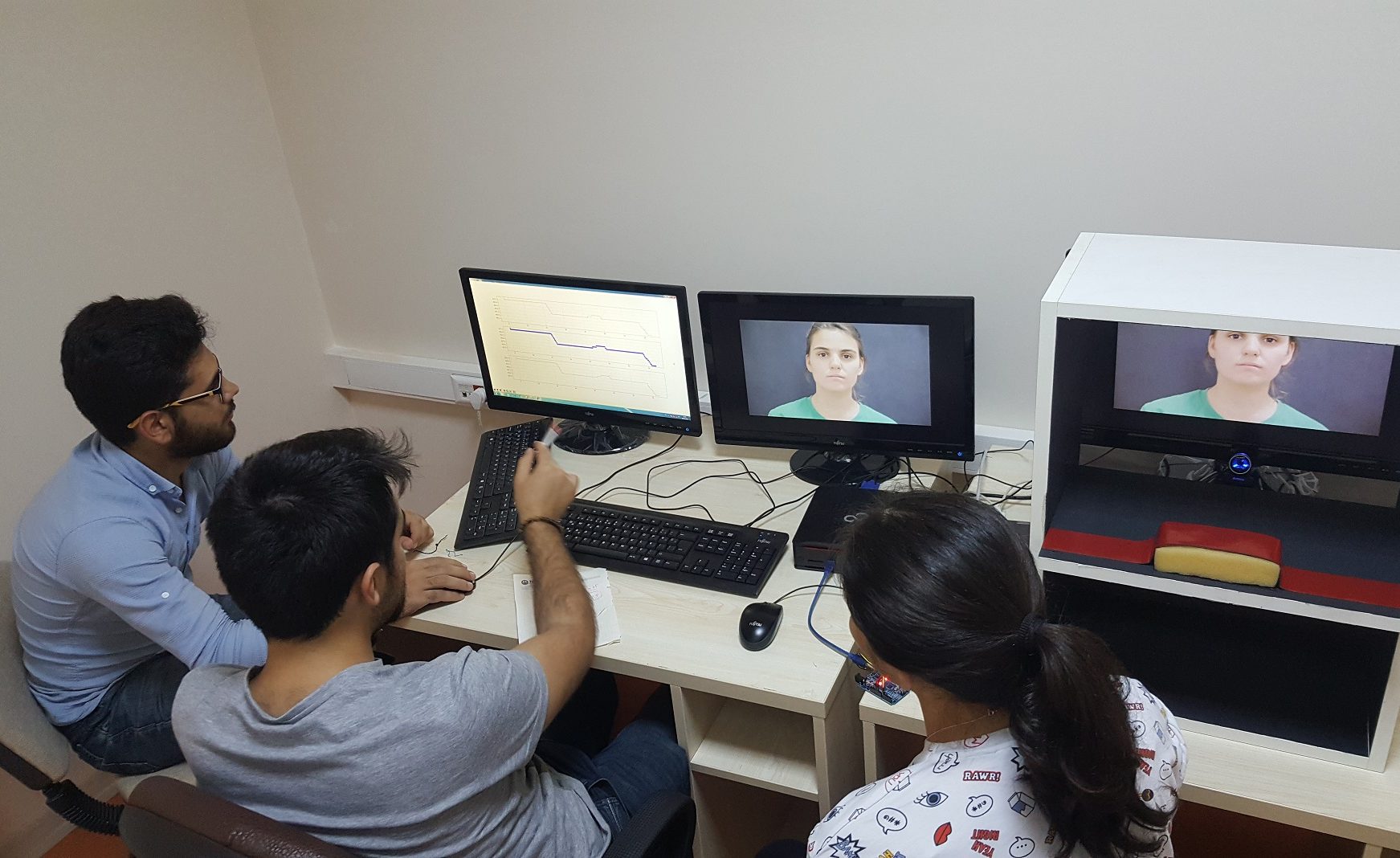

Emotional Expression Stroop Task
This study aims to adapt the Stroop Test format to emotional expressions by verbally adding emotional expressions that are congruent or incongruent with the emotional faces. Participants were asked to mimic the expressions on the presented stimuli. For this purpose, two tasks were completed: In the first task, participants suppressed the facial expression in the photo and expressed the emotion indicated by the word. In the second task, they suppressed the word and expressed the emotion shown by the face. In addition to measuring reaction time, EMG was used to measure muscle activity, and GSR was used to measure participants' emotional responses.
Mediterranean Emotional Dynamic and Static Face Set
The goal is to develop a face set that includes both natural and unnatural emotional expressions. Using a tested set of emotional videos to elicit the models' emotional expressions, video clips of these facial expressions and their static versions are being created.

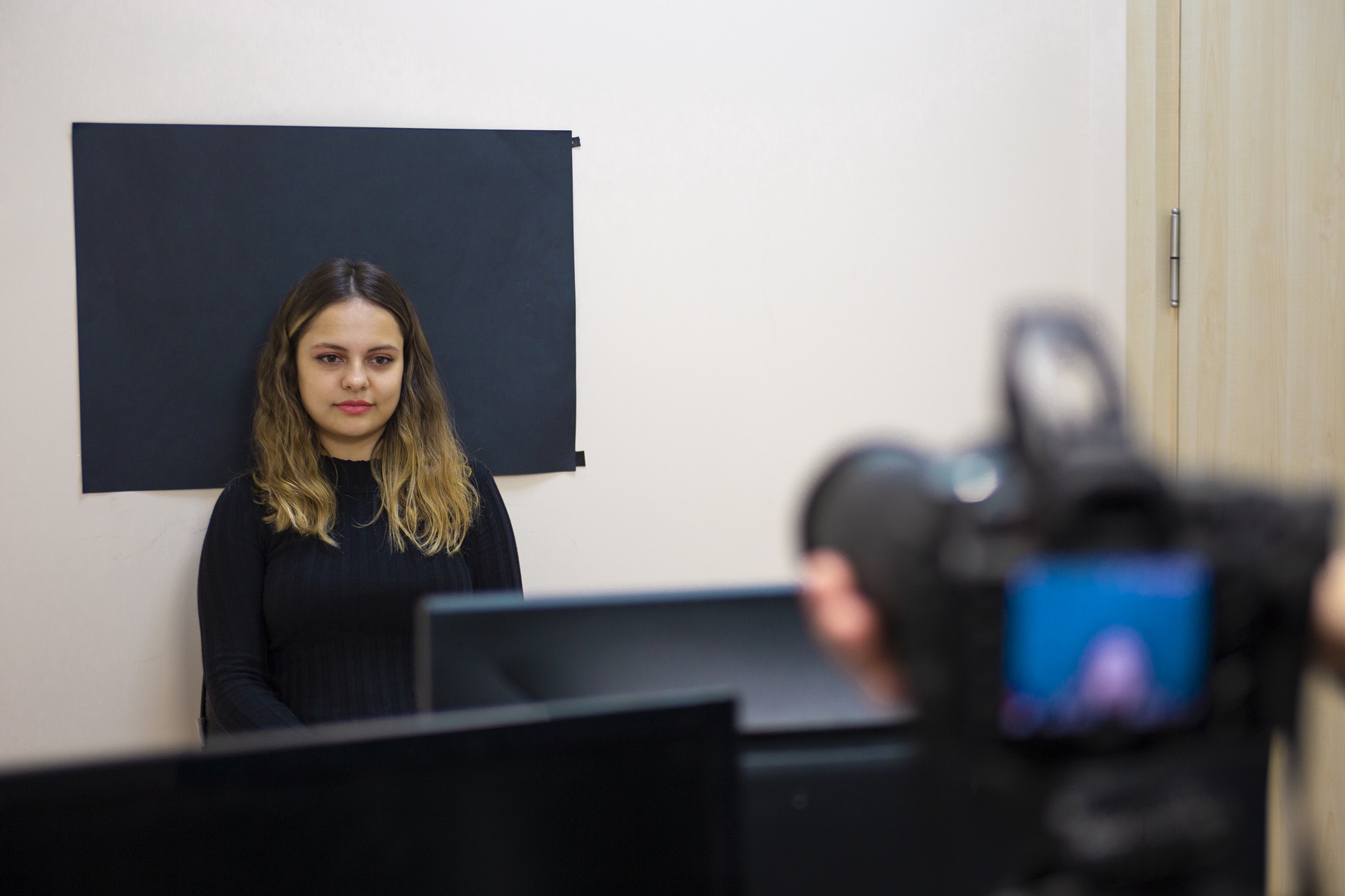

Investigating the Part-Whole Effect in the Recognition of Primate Faces
Our study aims to uncover how the human face recognition mechanism differs when recognizing faces of other primates. Specifically, the applicability of the holistic face processing theory to the faces of different species has been investigated.
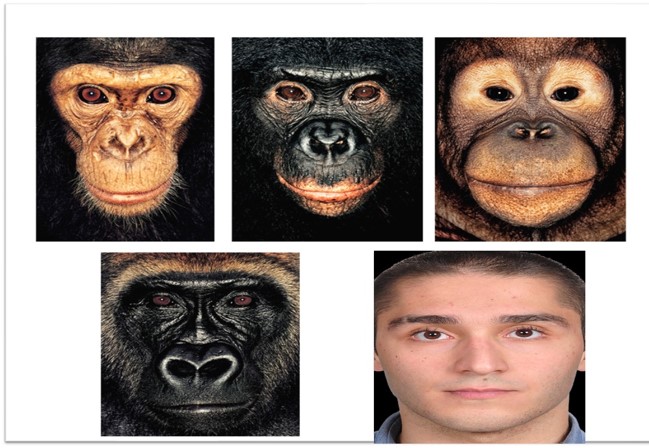
The Effect of Mask Use on Face Perception During the COVID-19 Pandemic

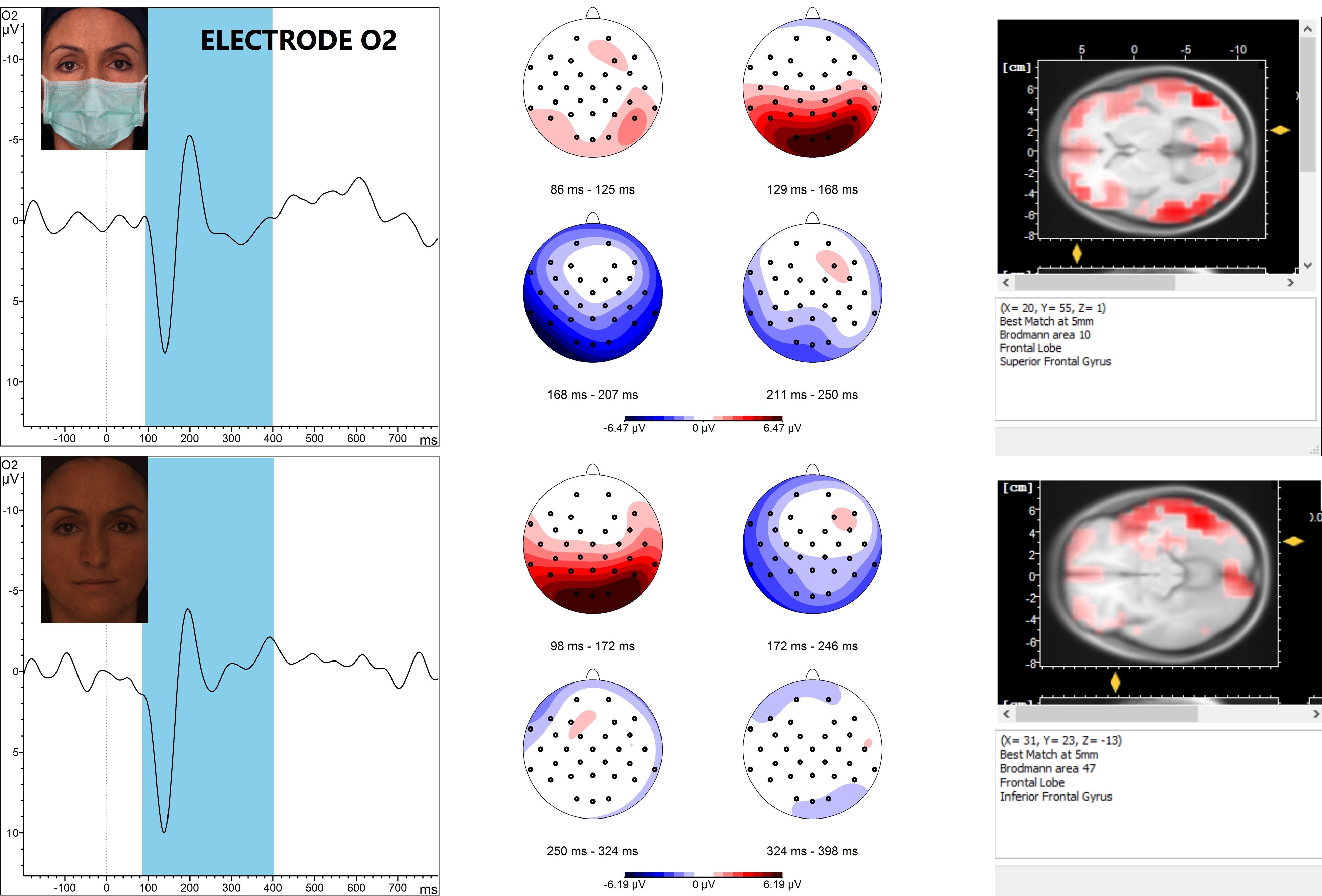
Son güncelleme : 12.02.2024 11:40:20


